Kohlrabi gardening for beginners, that’s what we’re diving into today! Have you ever seen those quirky, alien-looking vegetables at the farmer’s market and wondered, “What is that, and can I grow it myself?” Well, the answer is a resounding YES! And trust me, it’s easier than you think. For centuries, kohlrabi has been a staple in European and Asian cuisines, prized for its mild, slightly sweet flavor and crisp texture. It’s a nutritional powerhouse, packed with Vitamin C and fiber, making it a fantastic addition to your diet.
But why should you bother with kohlrabi gardening? In today’s world, where fresh, healthy produce can be expensive and sometimes hard to find, growing your own food is becoming increasingly important. Plus, there’s nothing quite like the satisfaction of harvesting something you’ve nurtured from a tiny seed. This DIY guide will walk you through everything you need to know to successfully grow kohlrabi, even if you’re a complete beginner. We’ll cover everything from seed starting to harvesting, ensuring you have a bountiful crop of this unique and delicious vegetable. So, grab your gardening gloves, and let’s get started on your kohlrabi gardening adventure!
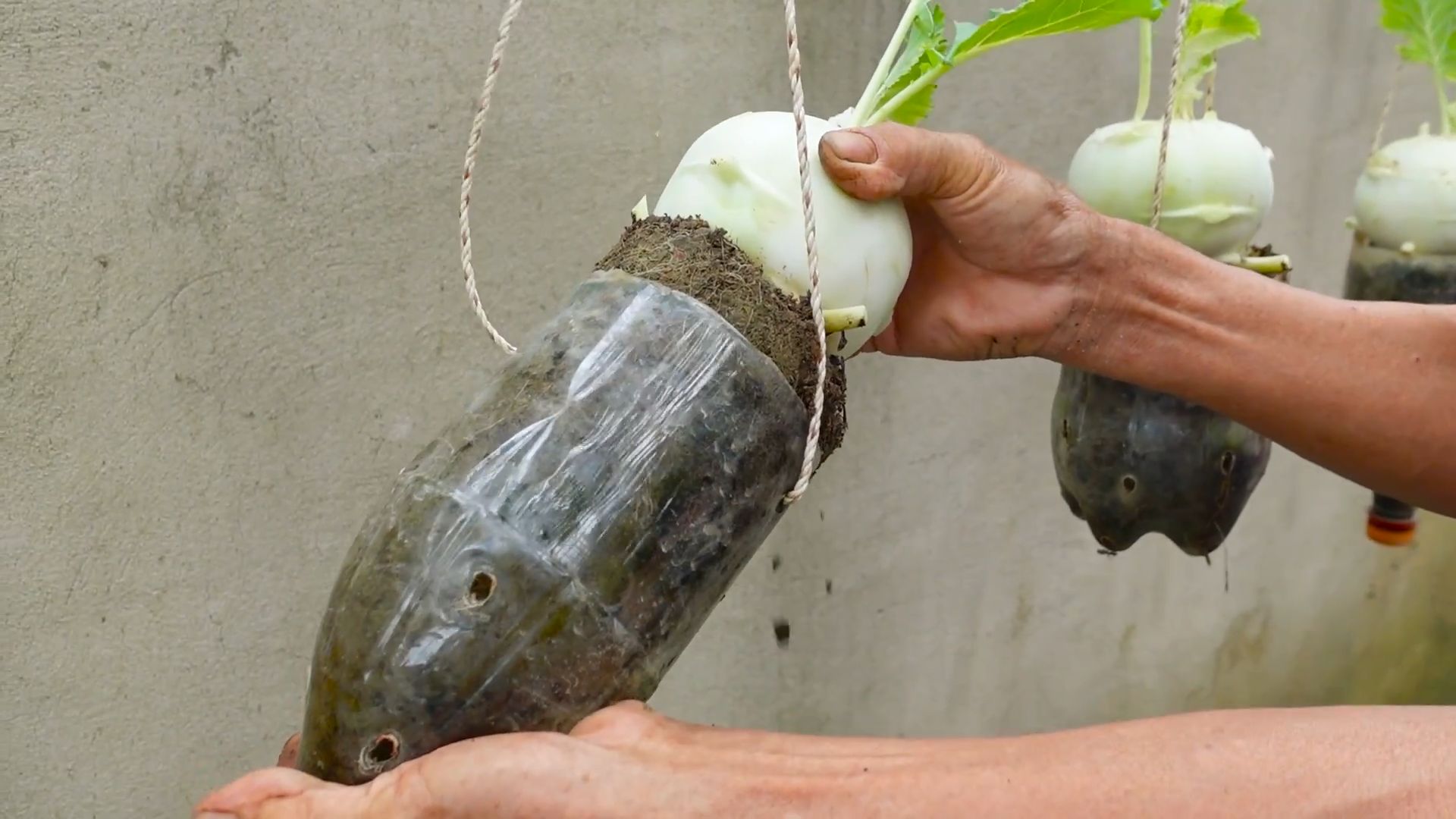
Growing Kohlrabi: A Beginner’s Guide to This Underrated Vegetable
Okay, so you’re thinking about growing kohlrabi? Awesome! Trust me, it’s easier than it sounds, and the payoff is delicious. Kohlrabi, sometimes called a German turnip (though it’s not a turnip!), is a cool-season vegetable that’s surprisingly versatile. Think of it like a cross between a cabbage and a radish, with a mild, slightly sweet flavor. Let’s dive into how you can grow your own kohlrabi, even if you’re a complete beginner.
Choosing Your Kohlrabi Variety
First things first, let’s talk varieties. There are a few different types of kohlrabi you can choose from, and they vary in color and maturity time. Here are a few popular options:
* Early White Vienna: This is a classic, fast-maturing variety that produces pale green bulbs. It’s a great choice for beginners because it’s relatively easy to grow and matures quickly (around 45-55 days).
* Early Purple Vienna: Similar to the White Vienna, but with a beautiful purple skin. The flesh inside is still pale green. It also matures in about 55 days.
* Grand Duke: This is a hybrid variety known for its disease resistance and uniform bulb size. It’s a good option if you’ve had trouble with pests or diseases in the past. It matures in about 45 days.
* Kossak: If you want a larger kohlrabi, Kossak is your go-to. It can grow quite large without becoming woody or tough. It takes a bit longer to mature, around 70 days.
I usually recommend starting with Early White Vienna or Early Purple Vienna. They’re reliable and give you a quick harvest, which is always encouraging!
Getting Started: Planting Kohlrabi
Kohlrabi is a cool-season crop, which means it thrives in cooler temperatures. The best time to plant it is either in early spring or late summer for a fall harvest.
* Timing is Key: For a spring crop, start seeds indoors about 4-6 weeks before the last expected frost. You can also direct sow seeds outdoors a few weeks before the last frost, but starting indoors gives you a head start. For a fall crop, sow seeds directly into the garden in late summer, about 6-8 weeks before the first expected frost.
* Starting Seeds Indoors: If you’re starting seeds indoors, use seed-starting trays or small pots filled with a good-quality seed-starting mix. Sow the seeds about 录 inch deep and keep the soil moist but not soggy. Place the trays in a warm, sunny location or under grow lights. Once the seedlings have a few true leaves, you can transplant them into the garden.
* Direct Sowing: If you’re direct sowing, prepare the soil by loosening it and adding some compost or other organic matter. Sow the seeds about 陆 inch deep and 1-2 inches apart in rows that are 12-18 inches apart. Once the seedlings emerge, thin them to about 6-8 inches apart.
Important Note: Kohlrabi doesn’t like to be transplanted, so if you’re starting seeds indoors, be very gentle when transplanting them. Try to disturb the roots as little as possible.
Preparing the Soil
Kohlrabi needs well-drained, fertile soil to thrive. Before planting, amend the soil with plenty of compost or other organic matter. This will improve drainage, add nutrients, and help retain moisture.
* Soil pH: Kohlrabi prefers a soil pH between 6.0 and 7.5. You can test your soil pH with a soil testing kit, which you can find at most garden centers. If your soil is too acidic, you can add lime to raise the pH. If it’s too alkaline, you can add sulfur to lower the pH.
* Fertilizing: Kohlrabi is a heavy feeder, so it needs plenty of nutrients. Before planting, incorporate a balanced fertilizer into the soil. During the growing season, you can side-dress the plants with compost tea or a liquid fertilizer every few weeks.
Caring for Your Kohlrabi Plants
Once your kohlrabi plants are in the ground, there are a few things you need to do to keep them healthy and productive.
1. Watering: Kohlrabi needs consistent moisture to grow well. Water the plants regularly, especially during dry periods. Aim for about 1 inch of water per week.
2. Weeding: Keep the area around your kohlrabi plants free of weeds. Weeds compete with the kohlrabi for water and nutrients, and they can also harbor pests and diseases.
Okay, so you’re thinking about growing kohlrabi? Awesome! Trust me, it’s easier than it sounds, and the payoff is delicious. Kohlrabi, sometimes called a German turnip (though it’s not a turnip!), is a cool-season vegetable that’s surprisingly versatile. Think of it like a cross between a cabbage and a radish, with a mild, slightly sweet flavor. Let’s dive into how you can grow your own kohlrabi, even if you’re a complete beginner.
Choosing Your Kohlrabi Variety
First things first, let’s talk varieties. There are a few different types of kohlrabi you can choose from, and they vary in color and maturity time. Here are a few popular options:
* Early White Vienna: This is a classic, fast-maturing variety that produces pale green bulbs. It’s a great choice for beginners because it’s relatively easy to grow and matures quickly (around 45-55 days).
* Early Purple Vienna: Similar to the White Vienna, but with a beautiful purple skin. The flesh inside is still pale green. It also matures in about 55 days.
* Grand Duke: This is a hybrid variety known for its disease resistance and uniform bulb size. It’s a good option if you’ve had trouble with pests or diseases in the past. It matures in about 45 days.
* Kossak: If you want a larger kohlrabi, Kossak is your go-to. It can grow quite large without becoming woody or tough. It takes a bit longer to mature, around 70 days.
I usually recommend starting with Early White Vienna or Early Purple Vienna. They’re reliable and give you a quick harvest, which is always encouraging!
Getting Started: Planting Kohlrabi
Kohlrabi is a cool-season crop, which means it thrives in cooler temperatures. The best time to plant it is either in early spring or late summer for a fall harvest.
* Timing is Key: For a spring crop, start seeds indoors about 4-6 weeks before the last expected frost. You can also direct sow seeds outdoors a few weeks before the last frost, but starting indoors gives you a head start. For a fall crop, sow seeds directly into the garden in late summer, about 6-8 weeks before the first expected frost.
* Starting Seeds Indoors: If you’re starting seeds indoors, use seed-starting trays or small pots filled with a good-quality seed-starting mix. Sow the seeds about 录 inch deep and keep the soil moist but not soggy. Place the trays in a warm, sunny location or under grow lights. Once the seedlings have a few true leaves, you can transplant them into the garden.
* Direct Sowing: If you’re direct sowing, prepare the soil by loosening it and adding some compost or other organic matter. Sow the seeds about 陆 inch deep and 1-2 inches apart in rows that are 12-18 inches apart. Once the seedlings emerge, thin them to about 6-8 inches apart.
Important Note: Kohlrabi doesn’t like to be transplanted, so if you’re starting seeds indoors, be very gentle when transplanting them. Try to disturb the roots as little as possible.
Preparing the Soil
Kohlrabi needs well-drained, fertile soil to thrive. Before planting, amend the soil with plenty of compost or other organic matter. This will improve drainage, add nutrients, and help retain moisture.
* Soil pH: Kohlrabi prefers a soil pH between 6.0 and 7.5. You can test your soil pH with a soil testing kit, which you can find at most garden centers. If your soil is too acidic, you can add lime to raise the pH. If it’s too alkaline, you can add sulfur to lower the pH.
* Fertilizing: Kohlrabi is a heavy feeder, so it needs plenty of nutrients. Before planting, incorporate a balanced fertilizer into the soil. During the growing season, you can side-dress the plants with compost tea or a liquid fertilizer every few weeks.
Caring for Your Kohlrabi Plants
Once your kohlrabi plants are in the ground, there are a few things you need to do to keep them healthy and productive.
1. Watering: Kohlrabi needs consistent moisture to grow well. Water the plants regularly, especially during dry periods. Aim for about 1 inch of water per week.
2. Weeding: Keep the area around your kohlrabi plants free of weeds. Weeds compete with the kohlrabi for water and nutrients, and they can also harbor pests and diseases.
3. Mulching: Apply a layer of mulch around your kohlrabi plants to help retain moisture, suppress weeds, and regulate soil temperature. Straw, hay, or wood chips are all good options.
4. Pest Control: Kohlrabi can be susceptible to a few pests, including cabbage worms, aphids, and flea beetles. Inspect your plants regularly for signs of pests and take action if you see any. You can use insecticidal soap, neem oil, or other organic pest control methods.
5. Fertilizing (Again!): As I mentioned earlier, kohlrabi is a heavy feeder. Side-dress your plants with compost tea or a liquid fertilizer every few weeks to keep them growing strong.
Harvesting Your Kohlrabi
This is the fun part! Kohlrabi is ready to harvest when the bulbs are about 2-3 inches in diameter. Don’t let them get too big, or they can become tough and woody.
1. Check the Size: Gently feel the bulb. It should be firm and smooth. If it feels soft or spongy, it’s probably overripe.
2. Harvesting: To harvest, simply cut the bulb from the stem with a sharp knife. Leave about an inch of stem attached.
3. Remove the Leaves: Remove the leaves from the bulb. You can eat the leaves, too! They taste similar to kale or collard greens.
4. Storage: Kohlrabi can be stored in the refrigerator for several weeks. Store the bulbs in a plastic bag or container to prevent them from drying out.
Troubleshooting Common Problems
Even with the best care, you might encounter a few problems when growing kohlrabi. Here are a few common issues and how to deal with them:
* Bolting: Bolting is when the plant prematurely goes to seed. This can happen if the weather gets too hot or if the plants are stressed. To prevent bolting, plant kohlrabi in early spring or late summer, and make sure the plants get plenty of water and nutrients.
* Cracking: Cracking can occur if the soil is too dry or if the plants are exposed to sudden changes in moisture. To prevent cracking, water the plants regularly and mulch around them to help retain moisture.
* Pests and Diseases: As mentioned earlier, kohlrabi can be susceptible to a few pests and diseases. Inspect your plants regularly and take action if you see any problems.
Delicious Ways to Enjoy Your Kohlrabi
Okay, you’ve grown your kohlrabi, now what? There are so many delicious ways to enjoy this versatile vegetable!
* Raw: Kohlrabi is delicious raw. Peel it and slice it into thin strips or cubes. Add it to salads, slaws, or veggie platters. It has a crisp, refreshing flavor.
* Roasted: Roasting kohlrabi brings out its sweetness. Toss it with olive oil, salt, and pepper, and roast it at 400掳F (200掳C) for about 20-30 minutes, or until it’s tender and slightly browned.
* Steamed: Steaming kohlrabi is a quick and easy way to cook it. Steam it for about 10-15 minutes, or until it’s tender.
* Mashed: Mashed kohlrabi is a great alternative to mashed potatoes. Boil or steam the kohlrabi until it’s tender, then mash it with butter, milk, and seasonings.
* In Soups and Stews: Add kohlrabi to soups and stews for a boost of flavor and nutrients. It adds a nice texture and a mild, slightly sweet taste.
* Kohlrabi Fries: Peel and cut the kohlrabi into fry shapes. Toss with olive oil, salt, pepper, and any other spices you like. Bake at 400掳F (200掳C) until tender and slightly browned.
I personally love kohlrabi raw in salads or roasted with other root vegetables. It’s also fantastic in a creamy kohlrabi soup. Don’t be afraid to experiment and find your favorite way to enjoy it!
Final Thoughts
Growing kohlrabi is
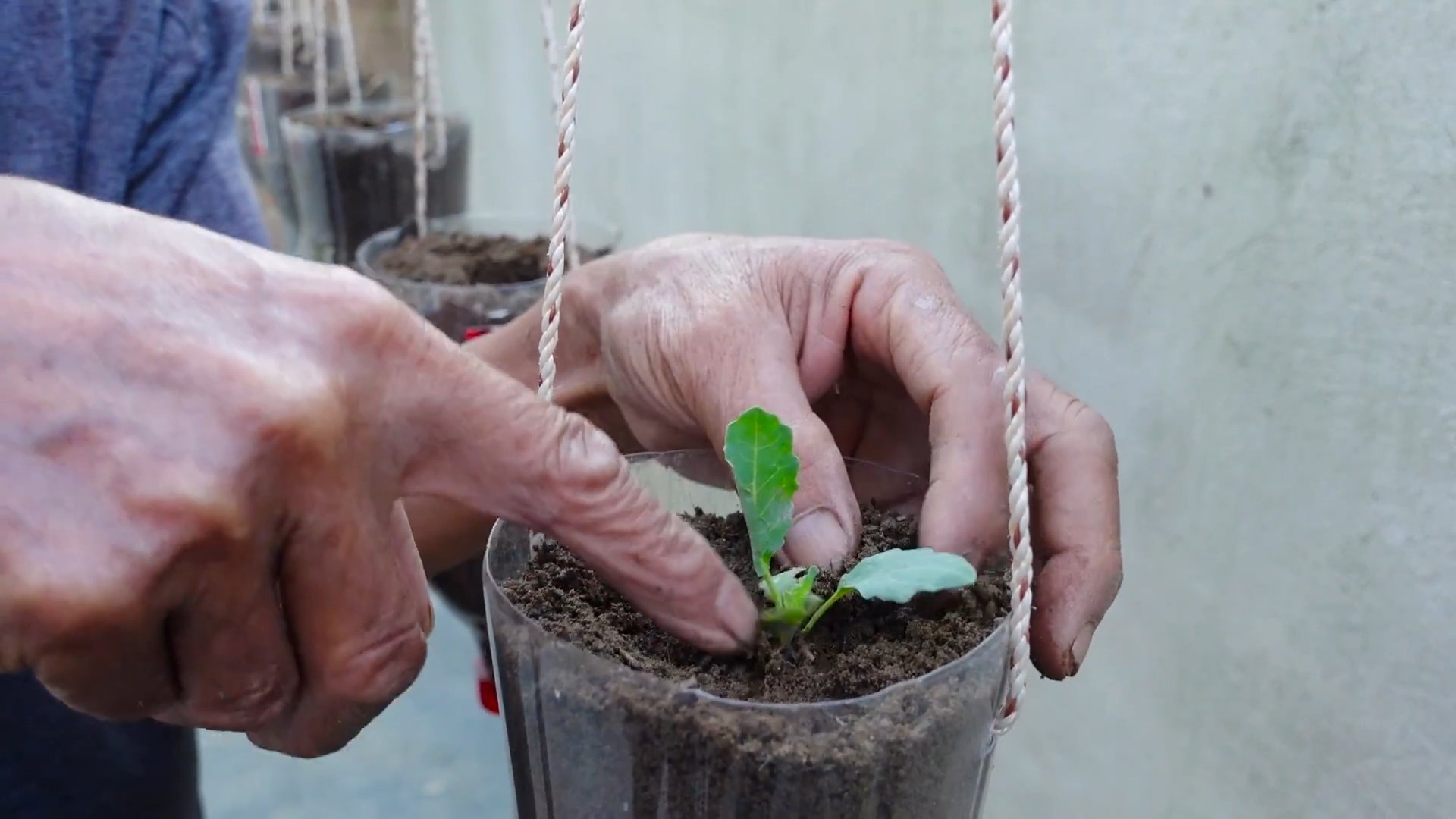
Conclusion
So, there you have it! Mastering kohlrabi gardening for beginners doesn’t have to be an intimidating endeavor. With a little planning, attention to detail, and the right approach, you can cultivate a thriving kohlrabi patch right in your own backyard. We’ve covered everything from selecting the perfect variety and preparing your soil to nurturing your plants and harvesting your delicious bounty.
Why is this DIY approach a must-try? Because growing your own kohlrabi offers unparalleled freshness and flavor that you simply can’t find in store-bought produce. Imagine the crisp, slightly sweet taste of a freshly harvested kohlrabi, sliced into salads, roasted to perfection, or even enjoyed raw with a dip. Plus, you have complete control over the growing process, ensuring that your kohlrabi is free from harmful pesticides and chemicals. You’re not just growing a vegetable; you’re cultivating a healthier lifestyle.
But the benefits extend beyond just taste and health. Gardening, in general, is a fantastic way to connect with nature, relieve stress, and get some much-needed exercise. And when you successfully grow your own food, you experience a sense of accomplishment and satisfaction that is truly rewarding.
Looking for variations? Consider experimenting with different kohlrabi varieties. ‘Early White Vienna’ is a classic choice, but ‘Purple Vienna’ adds a vibrant splash of color to your garden and your plate. For a milder flavor, try ‘Superschmelz,’ which can grow to an impressive size without becoming woody. You can also explore companion planting. Kohlrabi thrives alongside herbs like dill and chamomile, which can help deter pests and attract beneficial insects. Interplanting with lettuce or spinach can also maximize space in your garden.
Don’t be afraid to get your hands dirty and embrace the learning process. Every garden is unique, and what works for one person may not work for another. The key is to observe your plants, adapt your techniques, and learn from your experiences.
We wholeheartedly encourage you to try this DIY kohlrabi gardening method. It’s a rewarding and delicious way to connect with nature and enjoy the fruits (or rather, vegetables) of your labor. Once you’ve harvested your first crop, we’d love to hear about your experience! Share your tips, tricks, and photos in the comments below. Let’s build a community of kohlrabi enthusiasts and inspire others to embark on their own gardening adventures. Happy gardening!
Frequently Asked Questions (FAQ)
What is the best time to plant kohlrabi?
The timing for planting kohlrabi depends on your climate. Generally, kohlrabi is a cool-season crop, meaning it thrives in temperatures between 60掳F and 75掳F (15掳C and 24掳C). For a spring harvest, start seeds indoors 4-6 weeks before the last expected frost. Transplant seedlings outdoors 2-3 weeks before the last frost. For a fall harvest, sow seeds directly into the garden in late summer, about 6-8 weeks before the first expected frost. In warmer climates, you can grow kohlrabi throughout the winter. The key is to avoid planting during the hottest part of the summer, as high temperatures can cause the kohlrabi to bolt (go to seed) and become tough and bitter.
How much sunlight does kohlrabi need?
Kohlrabi requires at least 6 hours of direct sunlight per day to thrive. Choose a location in your garden that receives full sun for optimal growth and bulb development. If you live in a particularly hot climate, providing some afternoon shade can help prevent bolting.
What kind of soil is best for kohlrabi?
Kohlrabi prefers well-drained, fertile soil that is rich in organic matter. The ideal soil pH is between 6.0 and 7.5. Before planting, amend your soil with compost or well-rotted manure to improve drainage, fertility, and water retention. Avoid heavy clay soils, as they can become waterlogged and hinder root development. If you have clay soil, consider growing kohlrabi in raised beds or containers.
How often should I water kohlrabi?
Kohlrabi needs consistent moisture to grow properly. Water deeply and regularly, especially during dry periods. Aim to keep the soil consistently moist but not waterlogged. A good rule of thumb is to water when the top inch of soil feels dry to the touch. Mulching around your kohlrabi plants can help retain moisture and suppress weeds.
What are some common pests and diseases that affect kohlrabi?
Kohlrabi can be susceptible to several pests and diseases, including cabbage worms, aphids, flea beetles, and clubroot. To prevent pest problems, consider using row covers to protect your plants. Regularly inspect your plants for signs of infestation and take action promptly. Organic pest control methods, such as insecticidal soap or neem oil, can be effective. To prevent clubroot, ensure good soil drainage and avoid planting kohlrabi in the same location year after year. Crop rotation is essential for maintaining healthy soil and preventing disease buildup.
When is kohlrabi ready to harvest?
Kohlrabi is typically ready to harvest when the bulb reaches a diameter of 2-3 inches. The exact size will depend on the variety. Check the seed packet or plant tag for specific harvesting instructions. To harvest, simply cut the bulb from the stem just above the soil line. The leaves are also edible and can be cooked like spinach or kale.
Can I grow kohlrabi in containers?
Yes, kohlrabi can be successfully grown in containers. Choose a container that is at least 12 inches deep and wide to provide enough space for the roots to develop. Use a high-quality potting mix and ensure that the container has good drainage. Water regularly and fertilize every few weeks with a balanced fertilizer.
How do I store kohlrabi?
Kohlrabi can be stored in the refrigerator for several weeks. Remove the leaves and store them separately. Place the bulbs in a plastic bag or container to prevent them from drying out. The leaves can be stored in a plastic bag in the refrigerator for a few days.
Why is my kohlrabi tough and woody?
Kohlrabi can become tough and woody if it is allowed to grow too large or if it is exposed to high temperatures or drought stress. To prevent this, harvest your kohlrabi when it is still relatively small and tender. Ensure that your plants receive consistent moisture and protection from extreme heat.
Can I eat the kohlrabi leaves?
Yes, the leaves of kohlrabi are edible and nutritious. They can be cooked like spinach or kale and have a slightly milder flavor than the bulb. Choose young, tender leaves for the best taste and texture.


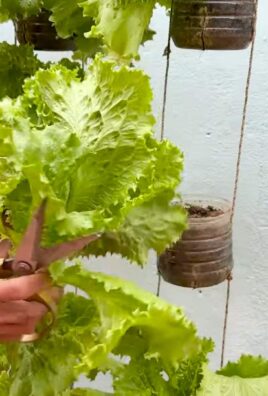
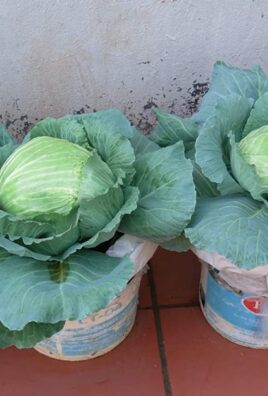
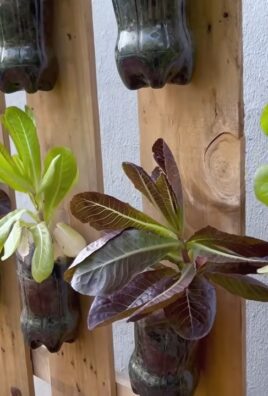
Leave a Comment